Pu Luong Nature Reserve Trekking: Ultimate Travel Guide
Pu Luong trekking trip is for you – who are you looking for a trekking trail not far from Hanoi with various levels and durations! Just a 4-4.5 hour drive from Hanoi, this land promises an immersive experience in rich and pristine nature, home to vibrant ethnic minorities.
With diverse trekking routes, it’s flexible to tailor your own adventure to your preferences. Hence, this blog is designed to be your ultimate travel guide for trekking in Pu Luong, providing you with all the necessary information to plan a fulfilling and meaningful trek. Let’s explore and be ready to plan with us!
What can you find in our blog?
ToggleA glance at Pu Luong Nature Reserve
Located roughly 160km from Hanoi, it will take you 4-4.5 hours to Pu Luong Nature Reserve. Established in 1999, this 17,662-hectare reserve spans Quan Hoa and Ba Thuoc districts in western Thanh Hoa province.
Come here and seize your chance to immerse in a diverse ecosystem encompassing dense forests, cascading waterfalls, limestone karst formations, caves, and breathtaking terraced rice fields that are worthy to see like ones in Mu Cang Chai and Hoang Su Phi. We believe that all nature lovers will be captivated by the pristine primary evergreen rainforest, teeming with abundant and diverse flora and fauna. The reserve is home to 1,579 plant species, including 58 rare species listed in the Vietnam and World Red Books, and 908 animal species, 47 of which are endangered.

Pu Luong also offers all culture enthusiasts with authentic and vibrant traditions of Thai and Muong groups. Encounter friendly locals during your trek, sharing warm smiles, greetings, and waves! For a deeper immersion, just free to stay with a local family to experience their way of life.
Now, let’s take a deep insight into this destination below!
Which trekking trails can you take in Pu Luong Nature Reserve?
Why Pu Luong instead of Sapa for your upcoming trekking trip? Actually, this nature reserve offers a significant time-saving advantage due to its proximity to Hanoi and easy connections to other nearby attractions, making it a perfect stop point for a Northern Vietnam adventure. Pu Luong is also a friendly spot to all nature lovers, whether you’re traveling solo, with family, or as part of a group.
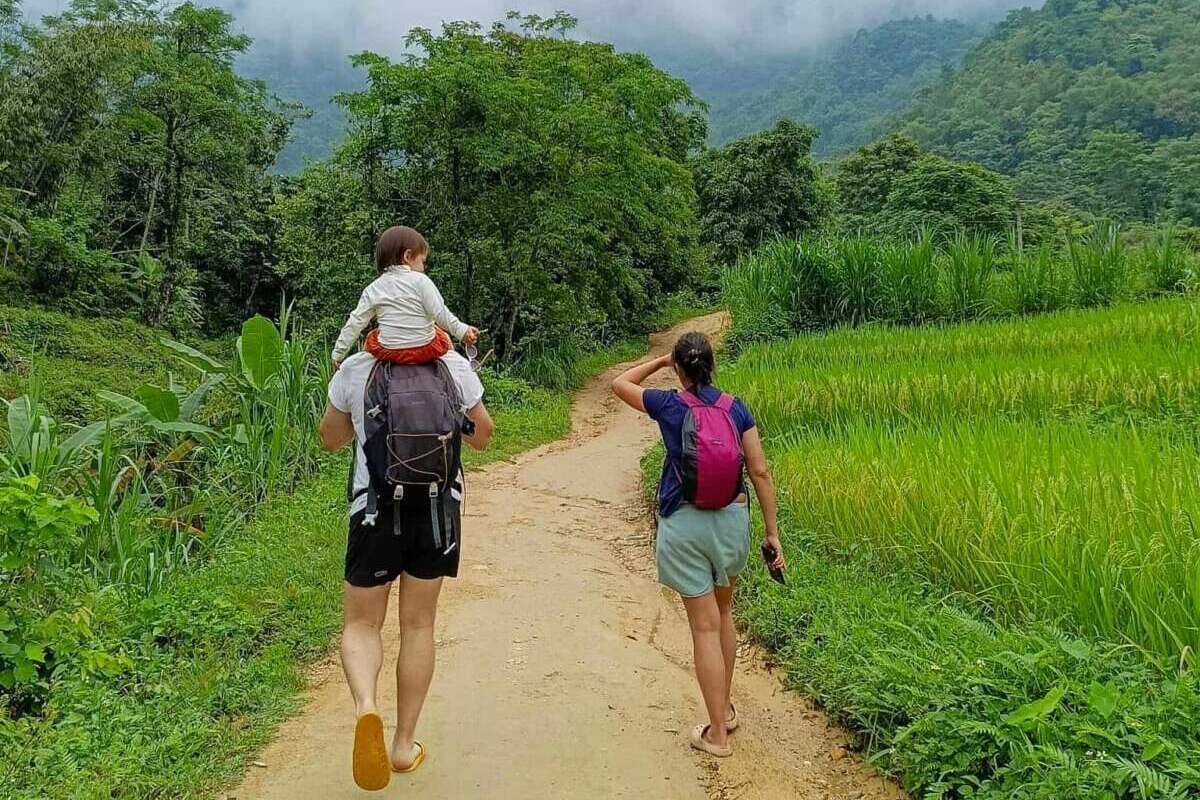
Despite being a lower-altitude mountain region in Northern Vietnam, you will be satisfied by pristine nature and ethnic minority cultures, through diverse trekking routes ranging from easy to difficult, half-day to multiple days. Below, we suggest several trekking trips through different villages, each offering unique characteristics and landscapes. Feel free to share your interests, and our team will customize a suitable itinerary for you!
Easy trekking paths in Pu Luong Nature Reserve
Route 1: Trekking from Bang village to Kho Muong village
This easy one-day trek follows gentle trails and offers stunning views of rice fields, high mountains, cassava plantations, and orange garden (especially between October and December). Among the scenes is time to relax in peaceful Thai and Muong villages, where you can encounter friendly locals in their traditional stilt houses.

Then, when you step into Kho Muong village, take time to explore the Kho Muong cave (Doi cave) and witness bats in their natural habitat, surrounded by diverse greenery plants. The ideal time to visit the cave is between 3-4 pm when the sunlight creates a magical and poetic scene. Let’s see it face-to-face, don’t just imagine it!
Route 2: Trekking from Don village to Lan village
Another trek takes you deeper into local villages to take a glimpse into the daily lives of the indigenous people. You’ll traverse dirt paths, forests, and local houses nestled amidst terraced fields in the fellow season.
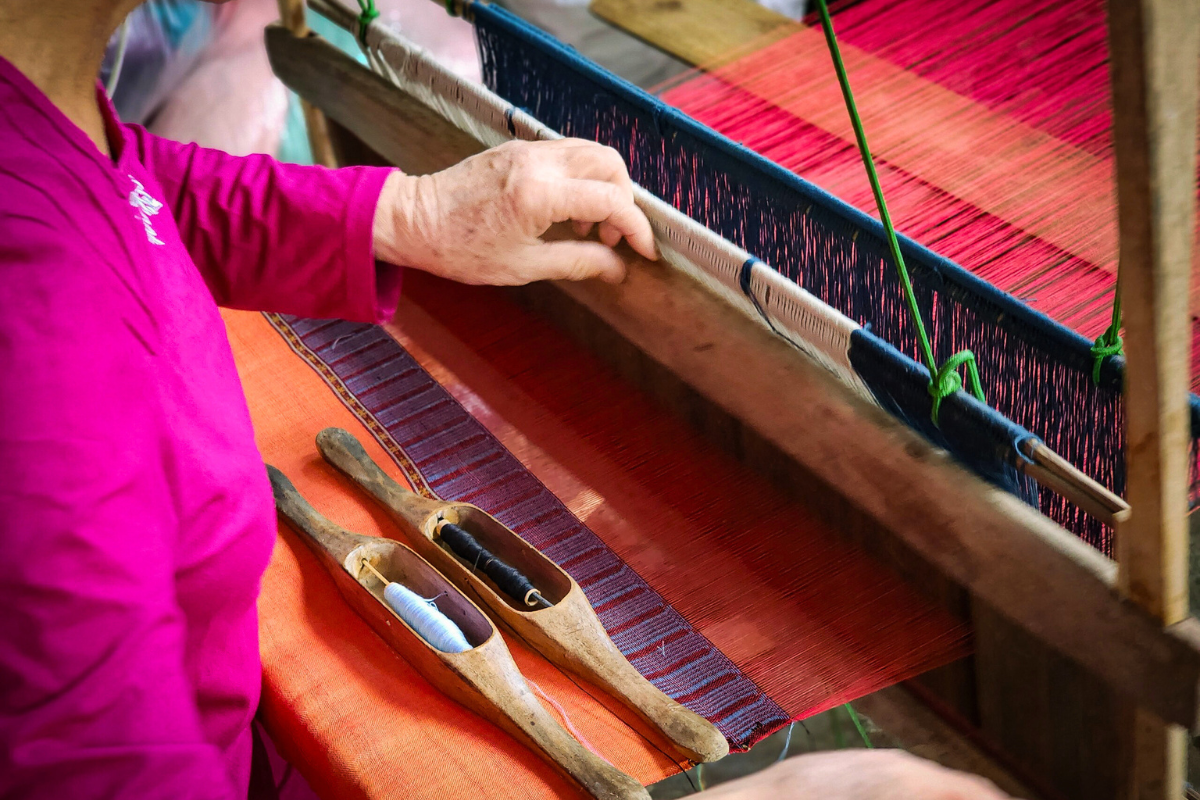
A highlight in this trekking route is Lan village, home to the Black Thai people, renowned for their traditional weaving handicraft. So, what can you do? There’re various activities for you: directly see and touch the ancient looms bringing back the old color of time, experience weaving with local Thai ladies, and admire the intricate and meaningful patterns of their handwoven fabrics. And don’t miss out to delve into the importance of fabric and this handicraft in local life, especially women!
Route 3: Trekking from Ban Cong village to bamboo raft area
Start your trek from a suspension bridge—a familiar sight in Northern Vietnam and always make travelers excited to see. Then, follow the gentle flow of the Cham River, you will discover the unique water wood wheels used by the Thai people for farming and daily life.

At the end of the path, you will see a bamboo rafting areawhere you can relax by the cool stream or enjoy a fun bamboo rafting experience with locals. Such a leisure and accessible to every traveler!
More challenging trekking paths in Pu Luong Nature Reserve
Route 1: Trekking from Kho Muong village to Hieu village
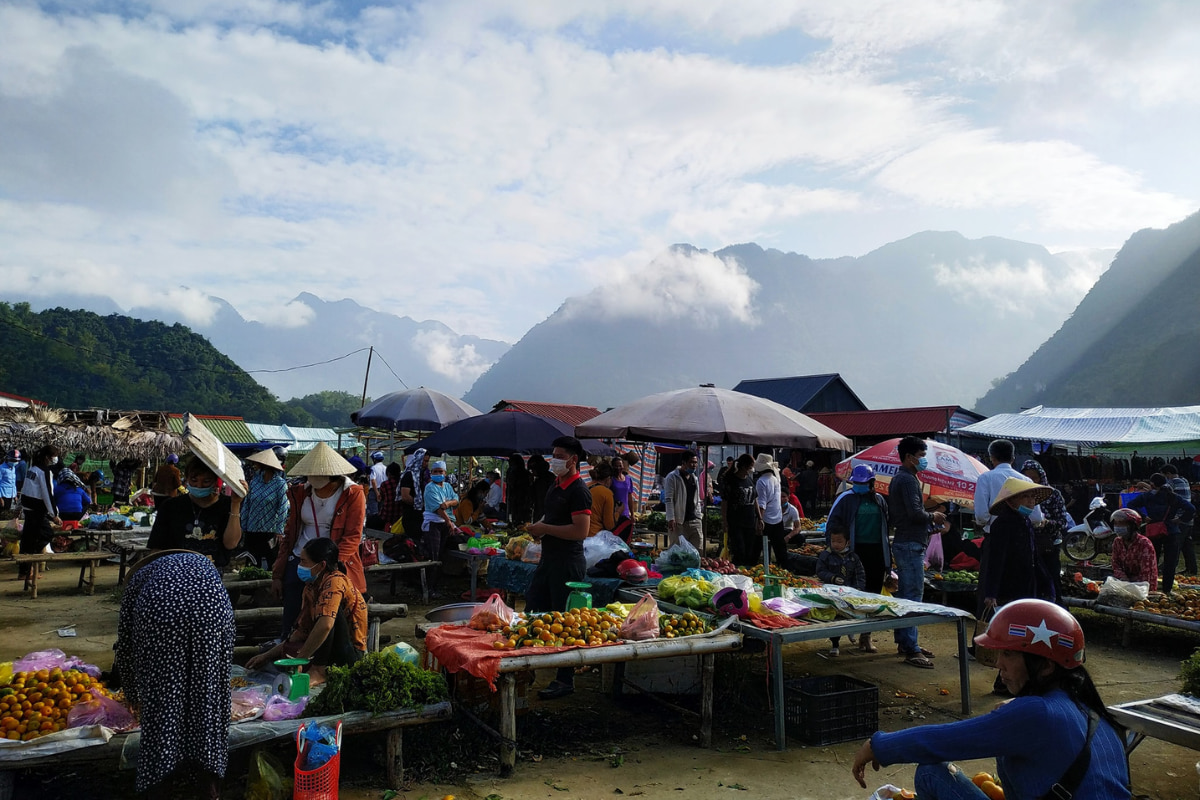
Embark on a longer journey through rice fields and scattering houses nestled among the mountains. Moreover, if you take this trek on a Friday or Sunday, you can experience a local market – Don market, a gathering place for the minority communities far from each other to exchange goods, information, and cultural experiences.
After crossing small streams and familiar waterwheels, you’ll be rewarded with a refreshing and abundant waterfall (Hieu waterfall) at the end of your journey.
Route 2: Trekking through Son - Ba - Muoi villages
A true hidden gem of Pu Luong Nature Reserve! Son – Ba – Muoi are three villages nestled in a small valley, surrounded by low limestone karst formations and small stone fields, crafting a unique landscape there. Located at an altitude of 1,180 meters, this area is less known to even the most seasoned adventurers due to limited accessibility. However, it’s just over 20 kilometers from the center of Pu Luong Nature Reserve, making it a captivating destination for nature lovers seeking an off-the-beaten-path experience, far from tourist radar.

Travel here by car or motorbike and start your trek amidst the wilderness and authentic Thai lifestyle! Walk along small village paths in crisp air to soak into secluded scenes that make you feel back to the ancient time, that is hard to gain in modern life nowadays. Plus, you’ll be surrounded by local produce, especially sweet orange orchards if you visit it in late November to early January. Plan your trip now to catch it!
Route 3: Hiking to Pu Luong peak
Are you curious about the name “Pu Luong”? In Thai language, this means “the highest peak in the village”, also known as the name of the highest mountain there – Pu Luong peak standing at 1,700 meters. This moderately challenging hike rewards you with the majestic nature and biodiversity of the Nature Reserve.
Through jungles, bamboo forests, limestone cliffs, steep slopes, and streams, let’s persevere to reach the peak that feasts you with a panoramic view of peaceful valleys, and a sense of tranquility and mindfulness amidst the majestic natural surroundings. This adventure can be completed in half-day or a full day, depending on your preference.
Trekking tours in Pu Luong Nature Reserve from DCT Responsible Travel
At DCT Responsible Travel, we offer a variety of trekking tours in Pu Luong, seamlessly combined with experiences in nearby destinations such as Mai Chau, Hang Kia – Pa Co, and Van Ho, to create a complete journey for you. Explore these suggested routes as references and contact us to customize your own adventure!
When is the best time to take a trekking in Pu Luong?
The ideal time for trekking in Pu Luong Nature Reserve is from October to March, when rainfall decreases and the weather becomes cool and dry. You can still enjoy the gentle sunshine while trekking, but it’s not too harsh, and you’ll be greeted by cool, crisp evenings. This is typical mountain weather in Vietnam during this period. Particularly, this is a once-in-a-year chance for you to savor the lively atmosphere in the villages during year-end traditional festivals, especially Lunar New Year.
Additionally, if you’re keen on terraced rice fields, Pu Luong is also a great choice. Although not as steep and vast as Sapa, Mu Cang Chai, or Hoang Su Phi, Pu Luong has its own unique beauty with terraced fields scattered throughout the villages. From November to early February, Pu Luong welcomes you with the original brown color of the fallow fields, a sight that we believe nature lovers will find impressive. And soon after, the first crop season begins, where you can admire the lush green from March to June or the golden first harvest season from September to October.
Where to stay in Pu Luong Nature Reserve?
In Pu Luong, villages are often scattered far apart, and you can choose a suitable accommodation depending on your trekking itinerary. Below is some basic information about features in each area that our team hope that they’re helpful for you:
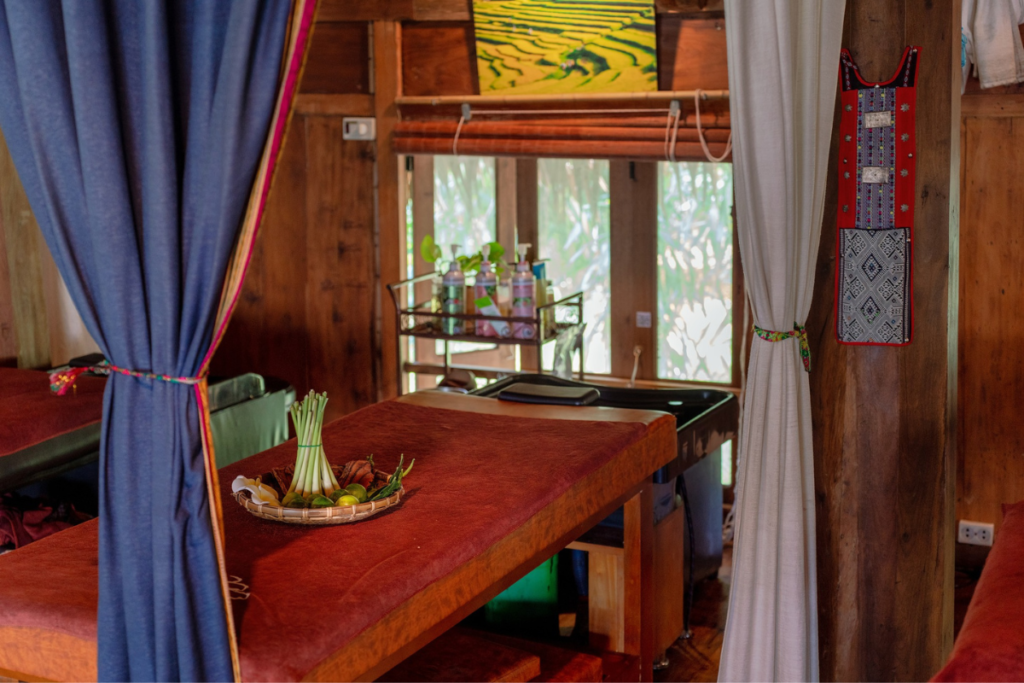
Don Village: The tourism center of Pu Luong, where many modern eco-lodges and fancy retreats are concentrated, highlighted Pu Luong Retreat – the first large-scale and high-standard resort built here. Known as Bali in Vietnam, the accommodations in this village are densely located and make the atmosphere quite noisy.

Leo Village: Not far from Don Village but quieter and still retaining a fairly authentic landscape, this is a perfect place to relax. You can choose Pu Luong Tree House or Lụa Pù Luông – ideal yoga retreat venues in Vietnam, offering spacious, airy, and peaceful spaces.

Hieu Village: Hieu waterfall is a highlight, bringing a line of rustic homestays along, which you can easily find on Google Maps. You can choose Les bains de Hieu; or homestays that are traditional houses of local tour guides, who were well-trained by NGOs. They promises to provide you with authentic experiences, such as Mr. Ba’s Homestay.
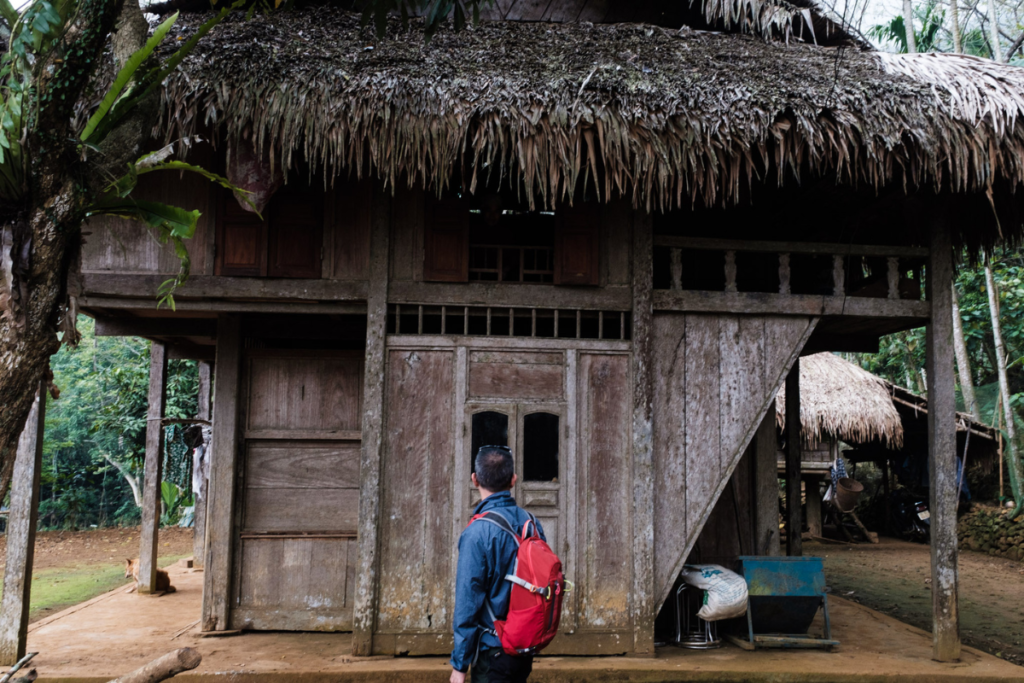
Kho Muong Village: One of the most remote villages in Pu Luong for many years, and currently, you can only reach it by trekking or motorbike. So, this is a paradise for those who love the wild and rustic beauty with an authentic local stay experience. You can consider Mr. Nam’s homestay that is also convenient for visiting Kho Muong Cave.
What to eat & drink in Pu Luong Nature Reserve?
Recharge your battery between your treks with delicious and fresh local mountain cuisine. With the skillful cooking of local hosts, what can you expect from meals at local homestays?

Stream duck: well-known for the Cổ Lũng duck, raised in mountain streams and naturally fed on water flowing from the rocks, is cooked into delicious dishes you can’t miss.

Stream fish: main ingredient for many traditional Thai dishes with significant cultural and spiritual meaning, such as steamed fish, smoked fish, and grilled fish.

Herbal wine: is one of the ways to bridge the gap between you and friendly locals, and don’t forget to explore the fascinating cultural story behind these bottles of wine.

Bamboo shoots: a signature dish of mountainous regions, prepared in various ways depending on the region, but always delicious and unique.

Cassava sticky rice: in late November, cassava is harvested and cooked with sticky rice, giving you a fragrant, soft, and chewy dish.

Smoked meat: must-have dish in every local kitchen on cold days, carefully marinated and deliciously flavorful.
Tips and common questions for a smooth Pu Luong trekking tour
*What can I do besides trekking? – You will fall in love with Pu Luong as soon as you embark on treks through villages, fields, terraced rice paddies, ancient forests, bamboo groves, waterfalls, caves, and more. But that’s not all! You can also experience other activities in Pu Luong such as motorbiking through villages, cycling on peaceful village roads, paddling traditional bamboo rafts with locals, soaking into mineral hotspring, handing on handicraft or just relaxing in the cozy homestays and seeing the slow pace of life.

*Where can I continue adventures from Pu Luong Nature Reserve? – Pu Luong Nature Reserve is a “crossroads” to many other attractive destinations that you can easily reach by motorbike, bus, limousine, or private car. Contact us if you want to find out more about any subsequent journey!
- From Pu Luong to Mai Chau: about 70km – 2 hour drive
- From Pu Luong to Van Ho: about 100km – 3 hour drive
- From Pu Luong to Ninh Binh: about 137km – 3 hour drive
- From Pu Luong to Ha Long Bay: about 310km – 6 hour drive
*How to get Pu Luong Nature Reserve from Hanoi? – It’s easy to travel from Hanoi to Pu Luong by motorbike, bus or private car. Contact us if you want a motorbike trip or private car via email [email protected] or phone number/whatsapp: +84 968551366.
Regarding bus, we suggest you a reliable bus – Tien Minh as follow:
- 16 seat bus: 280,000 VND/ticket
- 9 seat bus: 350,000 VND/ticket
*What to bring? – It is the dry season but cold in Northern Vietnam. Below is a list that we recommend you to bring:
- Personal bottle
- Warm clothes in winter (mid November to early March)
- Light pack with essentials
- Sleeping bag
- Insect repellent
- Good trekking & cycling shoes/sandals
- Toiletries, towel and flashlight
- Sun & rain gear (including sun screen and brimmed hat)
Pu Luong - Ideal nature getaway close to Hanoi
To us, Pu Luong Nature Reserve is like a newly awakened princess of Vietnam’s Northwestern mountains. Without towering mountains, winding roads, steep cliffs, or vast terraced fields, this land attracts nature lovers in an enchanting and less challenging way, while bringing a diverse ecosystem of flora and fauna.
Especially with two rice harvests a year, you have more opportunities to admire the rich beauty of the Vietnamese countryside, while other times of the year will feast your eyes on various other plants, vegetables, and fruits such as corn, cassava, oranges, and tangerines. And that’s not all, with just a short drive from Hanoi, you can spend 2-3 days exploring the authentic local life, the peaceful small villages that might make you slow down and rejuvenate yourself.






